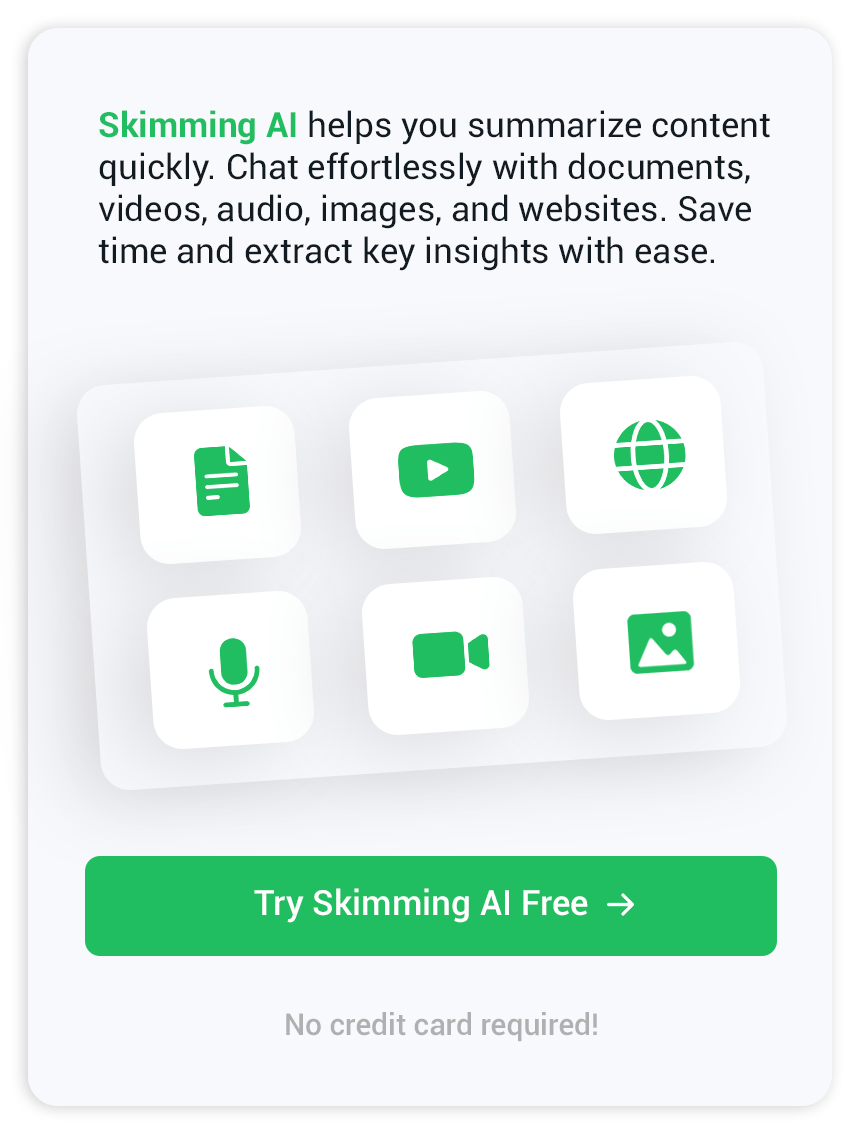AI Summarizer Guide: How an AI Summarizer Turns Long Text into Clear Takeaways
The internet never pauses. New white papers, policy drafts, analyst notes, and social posts appear every hour, each competing for attention. An AI summarizer enables anyone to quickly cut through the noise and grasp what matters in moments, rather than hours. This guide unpacks the core technology, practical benefits, and best-fit use cases so you can judge whether bringing an AI text summarizer into your personal or team workflow makes sense.
What an AI Summarizer Does
An AI summarizer is a web-based or desktop service that accepts raw text, a web link, a PDF, or even a video transcript, then returns a condensed version that preserves context and key facts. Under the hood, neural language models scan every sentence, map relationships between topics, weigh significance scores, and generate a short narrative or bullet outline that mirrors the structure and tone of the source.
Secondary benefits beyond word count
- Faster research turnover: Analysts can sift through more sources each day without sacrificing comprehension.
- Better retention: Shorter passages cut cognitive load, making it easier to remember dates, figures, and causal links.
- Stronger collaboration: Summaries help cross-functional teams discuss research without forcing everyone to read the whole draft.
Inside the Engine Room
Transformer-based language modeling
Modern summarizers rely on transformer architectures that excel at learning long-range dependencies. Attention heads catch signals about theme shifts, while positional encodings ensure the output stays faithful to the document’s arc.
Abstractive versus extractive output
- Extractive mode lifts core sentences directly from the source.
- Abstractive mode rewrites the insight in fresh phrasing, often weaving together clues from several paragraphs.
Switching between these modes allows users to tailor the tone, length, and reading level for each project.
Why a Text Summarization Tool Matters for Different Roles
Students
Course loads can include dozens of journal articles each week. A free AI summarizer condenses them into digestible notes, leaving more time for critical thinking and debate.
Marketers
Launching a new campaign demands swift competitor scans and trend reports. A rapid AI summary generator provides the key numbers and sentiment cues necessary for planning.
Legal and compliance teams
Large contracts and policy updates become far less daunting when an AI text summarizer highlights obligations, renewal clauses, and deadlines in plain language.
Core Features to Check Before You Choose
File and input versatility
Look for copy-and-paste text fields along with URL, PDF, and even video transcript upload options. The ability to feed an online summarizer with mixed media widens its value across departments.
Adjustable compression ratio
A sliding bar that sets summary length—10 percent of the original, 20 percent, or custom word counts—gives users finer control over depth versus speed.
Multilingual support
Global companies require summaries in multiple languages. Tools that switch languages on the fly avoid extra round-trips through translation software.
Privacy safeguards
If sensitive data flows through a summarizer, confirm that the platform deletes files after processing and follows encryption standards during transfer.
Collaboration and export
Export to DOCX, Markdown, or Google Docs saves copy-and-paste hassle, while shareable links keep teams synced without email chains.
Popular AI Summary Generators Compared
FeatureQuillBotGrammarlyScribbrDecopySkimming.ai
Extractive & Abstractive Yes Extractive Both Both Both
File Types: Text, URL Text, PDF Text, PDF, video Text, YouTube*
Adjustable Length Slider Toggle Slider Modes Slider
Multilingual English-centric English 15+ 30+ 20+
Notable Perk: Click-to-tone Grammar hints, Academic focus, Mind-map view, Direct YouTube link support
For hands-free video recaps, the Skimming AI extracts transcripts directly from videos and presents concise bullet points alongside timestamps.
Best Practices for Everyday Use
Pair summaries with headlines
When saving research clips, store the headline or section header above the condensed text. This keeps the source context clear during later reviews.
Verify quotes and statistics.
Even the best models can miss subtle nuances. If you spot a data point in a summary, click through to the original paragraph to confirm figure accuracy before citing.
Keep length flexible
A quick skim requires a 100-word outline; a pitch deck may necessitate a 250-word abstract. Adjust the compression each time to fit the task, rather than sticking to a single default length.
Future Trends to Watch
- Multimodal summarization will integrate images, charts, and spoken words into a single, cohesive digest.
- Domain-tuned engines for law, medicine, and engineering promise jargon-aware outputs that read like human specialist notes.
- On-device processing could enable phones and laptops to run models locally, thereby boosting privacy and reducing latency.
Final Thoughts
An AI summarizer is no longer a novelty. It is a practical ally that frees hours, sharpens focus, and keeps projects moving. Whether you are scanning policy updates, preparing a market brief, or catching up on lecture papers, choosing the right text summarization tool aligns your effort with the insight you need. Give one a trial run and feel the difference the next time a wall of text lands on your screen.


